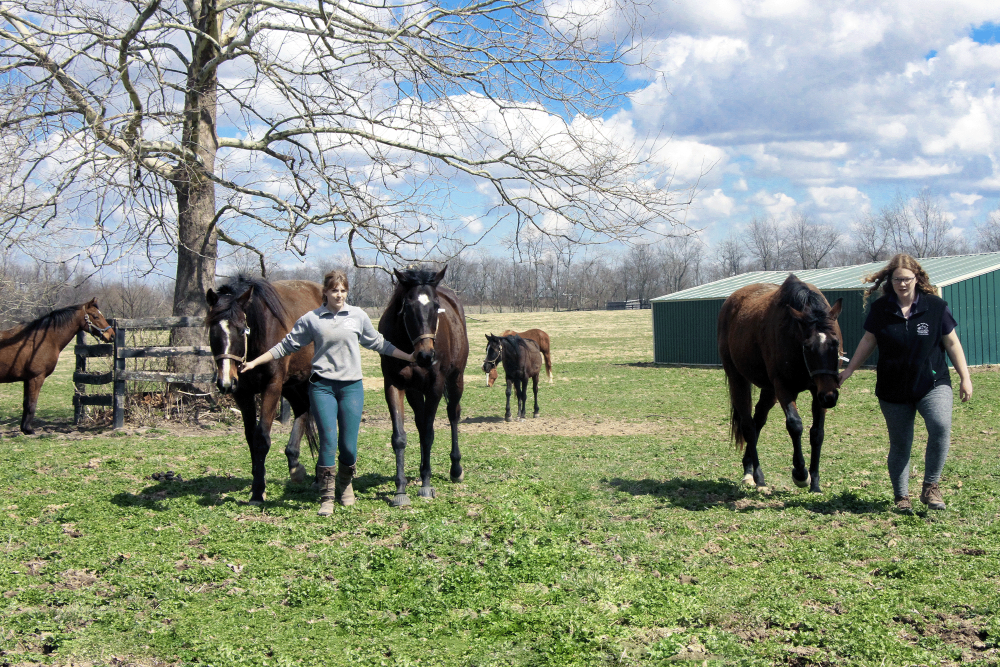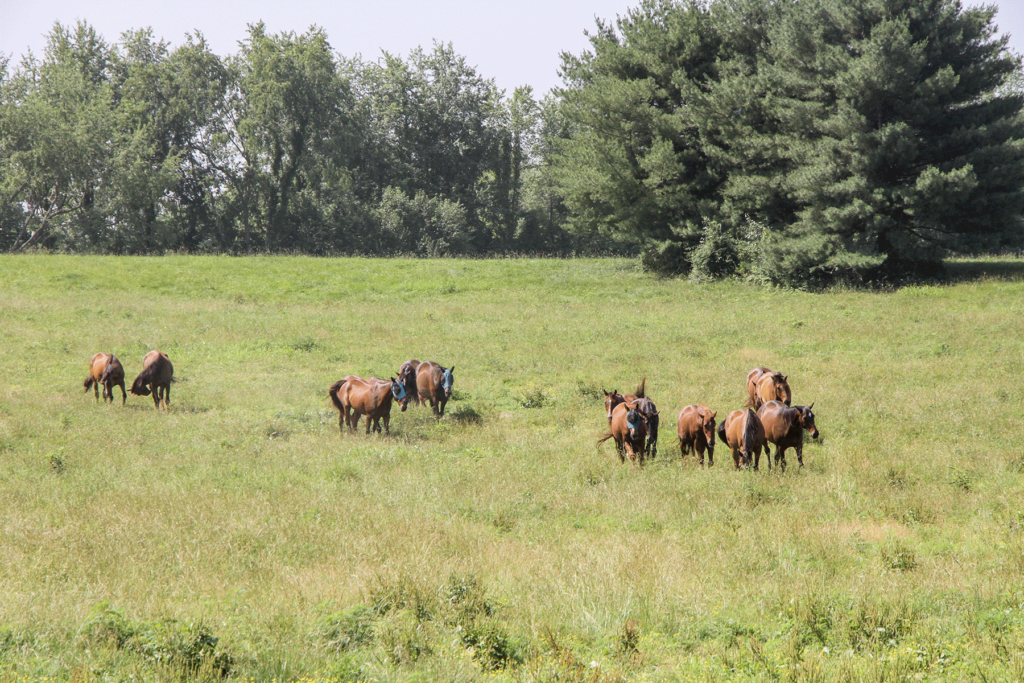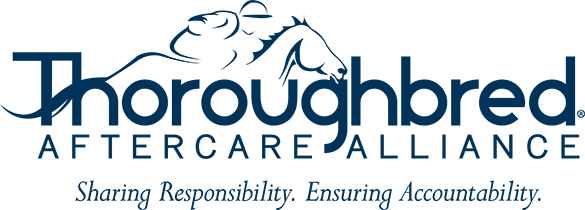THE CHALLENGES ARE OUTRUNNING THE REMEDIES
By STACIE CLARK ROGERS
Thoroughbred racing is currently undergoing a period of introspection. While we have surpassed previous efforts to revolutionize the sport, areas remain where the fundamental infrastructure must be examined. For a while, we have been grappling with the legacy of our sport and unwavering commitment to horse welfare. It is disheartening to admit the challenges we face are outpacing the proposed solutions and implementations.
INCEPTION & ORIGINAL PROPOSAL
As a prominent international sport, one of the most admirable and exhilarating initiatives we embarked upon in North America was the establishment of the Thoroughbred Aftercare Alliance for the explicit purpose of addressing concerns regarding welfare of Thoroughbreds post-racing. Its primary mission is to establish a comprehensive system that oversees and ensures the well-being of retired Thoroughbreds, while offering financial support to those entrusted with their care.
Over the past 11 years, some considerable strides have been made in terms of raising awareness and garnering support for aftercare within the industry. Nevertheless, there remains a pervasive sense of misunderstanding surrounding its objectives and functions.
The original model involved collecting contributions at various stages of a Thoroughbred’s life, including registration and licensing fees and contributions from racetracks, breeders, sales companies, and ADWs (Advance Deposit Wagering). Other countries such as Japan, France, and Australia have successfully adopted similar approaches. However, in North America, the practical implementation has fallen disappointingly short of the idealistic vision.
CHALLENGES – NO ONE WANTS TO TALK ABOUT IT
As expressed by John Phillips, former president of the Thoroughbred Aftercare Alliance, the pathways for contribution have quickly become detours. Unfortunately, a similar resistance is witnessed within the industry when it comes to medication reform, as engaging in such discussions is often viewed as uncomfortable or unglamorous. It fails to hold the same allure or retain the same attention from industry stakeholders and fans as selling a yearling for a million dollars or triumphing in a prestigious stakes race.
Having served as a former member of the Thoroughbred Aftercare Alliance board and now working as the operations consultant, I have firsthand experience of the challenges in aftercare. These include the daunting struggle for funding and the distressing presence of kill pens, which understandably make everyone uncomfortable. During my early involvement, a fellow board member asked for an honest assessment. I candidly addressed issues like the loss of stallion farms, individuals opting out of sales, and a perceived sense of competitiveness within aftercare. They then asked if there was any good news, and I felt as though I had profoundly disappointed them. This experience made me realize that aftercare issues are not eagerly discussed. When the Thoroughbred Aftercare Alliance was initially established, we genuinely believed it held the answers to the problems we faced. However, refusing to reassess our approach to aftercare is only impeding the progress of the Thoroughbred Aftercare Alliance.
CHALLENGES – PUBLIC SCRUTINITY & SUSTAINABILITY OF THE SPORT
Thoroughbred racing and breeding face intense public scrutiny. The industry lacks accountability for the well-being of the horses we breed, sell, compete with, and race against. This is a situation that demands immediate change. The recent instances of horses breaking down in and around Triple Crown races, despite concerted efforts to minimize injuries at premier tracks, should serve as a wake-up call for all of us. As seasoned individuals within this industry, we are acutely aware that injuries and the subsequent need for aftercare could be an existential threat to our industry that demands our urgent attention.
This is no longer just an agricultural concern. Our industry’s social license to operate could be at risk, as the public rightfully has a voice in the lifespan and well-being of Thoroughbreds, akin to their involvement in the care of animals residing in zoos and aquariums. We must prioritize the well-being of every horse involved, not just our own. It is our collective duty. It’s time to address aftercare proactively and directly. We can no longer afford to bury our heads in the sand.
CHALLENGES – INADEQUATE FUNDING & SUPPORT
The Thoroughbred Aftercare Alliance provides approximately $3.5 million annually to 81 accredited organizations. For these organizations, Thoroughbred care expenses alone stand at approximately $17 million (based on 2021 figures, with costs expected to continue rising). The total budgets for the accredited organizations amount to roughly $46 million per year. Not only does the granted amount fall short of horse care alone, it also fails to cover essential business costs.
Additional funding is crucial for racehorse retirement and well-being, as current resources are inadequate. Funding has decreased as the number of organizations and horses has grown. It is paramount that we ensure organizations possess the necessary resources to provide optimal care for retired racehorses, and we must actively encourage the industry to lend financial support. By doing so, we can positively impact Thoroughbred lives and improve industry perception.
Organizations assisting horses from lower-tier tracks and distressing situations operate with limited funding from the sources from which these Thoroughbreds originated. Consequently, these organizations are compelled to devote additional time and resources rehabilitating these horses, thereby incurring additional costs. To ensure the well-being of these vulnerable horses, we must address this funding disparity and provide increased support for their rehabilitation and rehoming efforts. By bolstering their resources, we can enhance the effectiveness of their efforts and safeguard the welfare of retired racehorses across the spectrum of tracks and circumstances.
CHALLENGES – DISPARITY IN ACCESS
We find ourselves in a rather unique scenario characterized by what can be termed as “elite aftercare.” In certain fortunate instances, when a Thoroughbred can race at a track with an aftercare fund, a stipend is often provided to support its transition to an aftercare organization. Sometimes owners are even approached to make additional donations. These horses undergoing such triage are in an ideal situation where resources are readily available, and within these organizations with substantial funding from various sources, the adoption rates are notably high. This elite form of aftercare is indeed wonderful for those who are fortunate enough to benefit from it.
The above option may be favorable for those with the means to support their horses after racing, but many in racing find themselves unable to provide ongoing care. In some unfortunate cases, alternative offers may regrettably appear. In certain racing states some tracks choose to turn a blind eye, neglecting to acknowledge or address these pressing issues. If Thoroughbreds at such tracks can even find their way into an accredited organization, they often arrive without any funding from their respective track or horsemen. The irony lies in the fact that these Thoroughbreds—who need aftercare support the most–may have originated from jurisdictions where funding was available. Due to circumstances beyond their control, they now find themselves in a different situation devoid of any financial support.
It is essential to recognize that there should be no geographical limitations or boundaries when it comes to providing comprehensive aftercare for North American Thoroughbreds. Every horse, regardless of its origin or current circumstances, deserves access to adequate care and support, regardless of location.
SOLUTION – INITIATE THE DISCUSSION
When reviewing our organization’s budgets, expenses, and financial landscape, a significant observation emerges. Most funding and top-quality horses go to a small number of accredited aftercare groups, leaving the organizations who have limited funding to care for more injured and at-risk horses, resulting in longer adoption times and lower adoption revenues.
While adopting out well-bred and well-cared-for horses from top-tier tracks seems to be sufficiently managed, it is the groups attending to the horses that require greater care who struggle to adopt out enough horses to sustain our racing and breeding industry.
Accreditation is a key responsibility of the Thoroughbred Aftercare Alliance, designed to highlight aftercare groups that adhere to the highest standards. However, where the sport has fallen short is in ensuring fair access to industry funding. Consequently, some accredited organizations do not have the funding that they need, while others end up overfunded, inadvertently perpetuating an elite aftercare scenario.
The good news is that there are numerous groups willing to facilitate the transition of horses from racing to new careers. There are countless success stories that bear witness to this fact. These are the organizations deserving more of our industry’s financial support. While I acknowledge that my viewpoint may not be universally shared, we must confront the issues at hand directly, to garner the support that they need.
Let us begin by acknowledging that relying on the “I take care of my own” mentality is insufficient. While many horse owners dutifully fulfill their responsibilities, there are others who are incapable or unwilling to do so. It is our collective duty to ensure that every single Thoroughbred is provided with the care they deserve.
We must critically evaluate the state of our sport and recognize the prevailing issues it faces. As we witness instances of medication violations in racing, it becomes evident that not everyone engages in cheating practices, yet the consequences affect all of us. Those who invest in the industry at its pinnacle seek a fair and honest playing field across all racetracks and sales. The same sentiment extends to aftercare organizations that diligently care for our Thoroughbreds.
We need to confront this issue straight on, without any evasion, and work collectively to ensure that all Thoroughbreds, irrespective of their circumstances or owners, receive proper care and an opportunity for a second career. It is high time for us to embrace collective responsibility and provide both financial and moral support to aftercare organizations. Only through collaborative efforts can we truly address this matter and safeguard the well-being of our beloved Thoroughbreds.
















